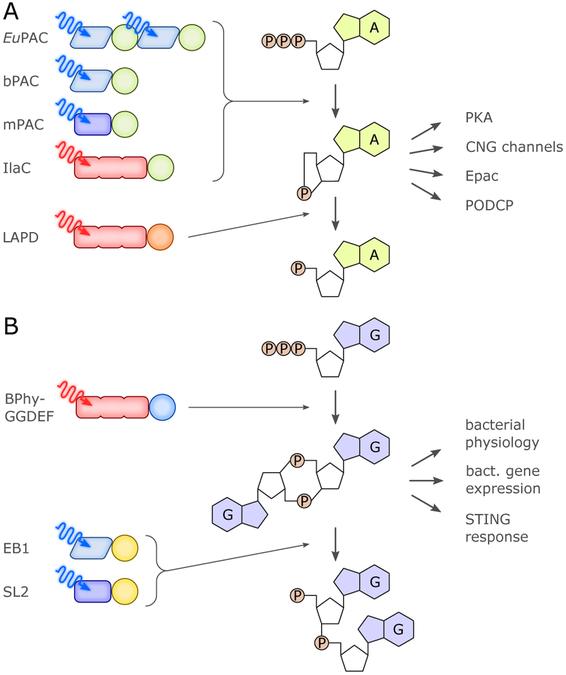Figure 19.
Optogenetic actuators for controlling cyclic-nucleotide second messengers. (A) A palette of photoactivated adenylate cyclases (PACs) responsive to BL93,94,279,280 or red light catalyze the formation of cAMP or cGMP. In eukaryotic cells, cAMP binds to and thus activates CNG channels, PKA, Epac and popeye-domain-containing proteins (PODCP).278 The red-light-activated PDE LAPD mediates the hydrolytic breakdown of cAMP and cGMP.281 (B) C-di-GMP is a versatile second messenger involved in numerous physiological adaptations of bacteria. Red-light-activated GGDEF enzymes produce c-di-GMP and achieve optogenetic control over physiology and gene expression in bacteria.282,283 In eukaryotes, c-di-GMP triggers the STING response as part of the vertebrate innate immune system. BL-activated EAL enzymes31,284,285 catalyze the hydrolysis of c-di-GMP. For clarity, all photoreceptors in panels (A) and (B) are drawn as monomers although they are active as homodimers. BLUF, LOV and bacteriophytochrome photosensors are denoted as parallelograms, rectangles and tripartite shapes, respectively; colored circles denote cyclases and phosphodiesterases specific for cyclic nucleotides.

